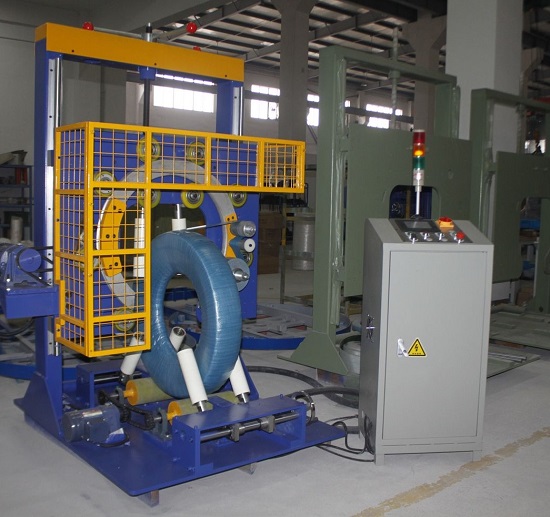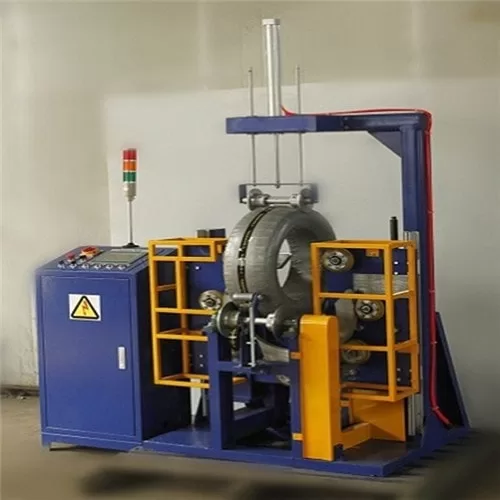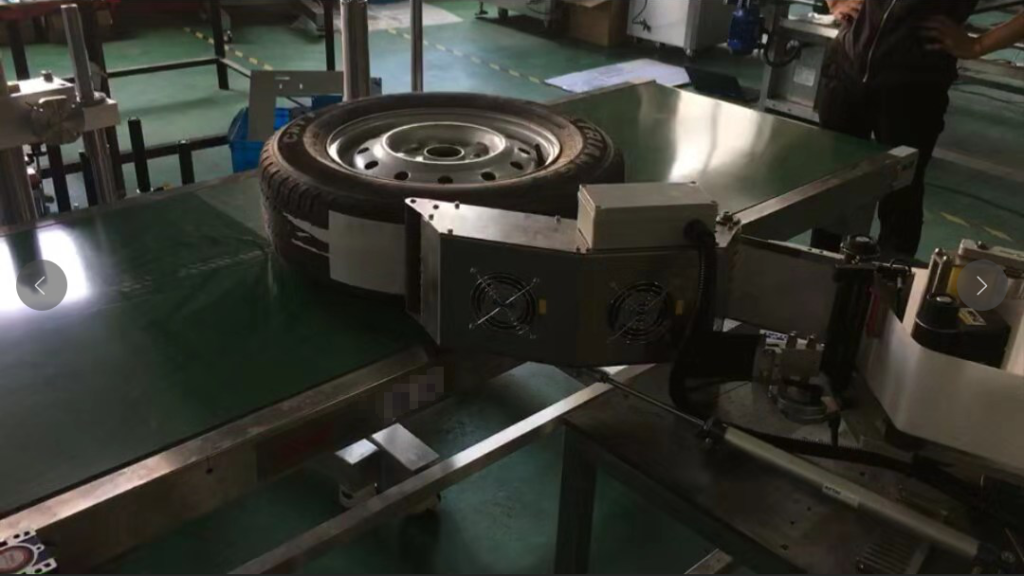Optimizing Operations: The Case for Investing in Automated Tyre Packaging Machines
In the demanding automotive and tyre industries, maintaining operational efficiency and product integrity is paramount. As manufacturers and distributors look to enhance productivity and protect assets, automated tyre packaging machines emerge as a critical technology investment. These systems offer significant advantages over manual methods, streamlining the process of handling, protecting, and preparing tyres for storage or shipment. This guide examines the operational benefits and strategic importance of integrating automated tyre packaging into your facility.
Understanding Automated Tyre Packaging Technology
Automated tyre packaging machines are designed to wrap tyres efficiently in protective materials, such as stretch film or specialized bags. The technology ranges from semi-automated wrappers requiring operator assistance to fully integrated systems capable of handling, wrapping, labeling, and palletizing tyres with minimal human intervention.
Key advancements in automation, sensor technology, and materials science have led to machines that are:
- Faster: Significantly increasing throughput compared to manual wrapping.
- More Efficient: Optimizing material usage and reducing waste.
- Smarter: Offering integration capabilities with Manufacturing Execution Systems (MES) and Warehouse Management Systems (WMS).
- More Versatile: Handling a wider range of tyre sizes and types.

Key Operational Benefits of Investment
Investing in automated tyre packaging equipment delivers measurable improvements across several operational areas.
1. Significant Throughput and Efficiency Gains
Manual tyre packaging is inherently slow and labor-intensive. Automated systems provide a substantial boost in speed and efficiency. Depending on the model and configuration, expect throughput rates such as:
- Semi-Automated Wrappers: 60-120 tyres per hour.
- Fully Automated Systems: Potentially 300-500+ tyres per hour.
This increased capacity allows businesses to handle larger volumes, meet tighter deadlines, and allocate labor resources to more value-added tasks.
2. Consistent Packaging Quality and Product Protection
Automation ensures uniformity in the packaging process, which is crucial for protecting tyres from damage, dirt, moisture, and UV degradation during storage and transit. Key benefits include:
- Uniform Wrap Tension: Applies consistent pressure for secure wrapping without damaging tyre beads or surfaces.
- Precise Material Application: Uses the optimal amount of film or bagging material, minimizing waste and ensuring complete coverage.
- Standardized Appearance: Creates a professional look for packaged tyres, enhancing brand perception.
Consistent, high-quality packaging reduces the risk of costly returns, customer complaints, and damage claims.

3. Long-Term Cost Reduction
While requiring an initial capital outlay, automated tyre packaging machines typically deliver a strong return on investment (ROI) through various cost savings:
- Reduced Labor Costs: Significantly lowers reliance on manual labor for the repetitive task of packaging.
- Material Savings: Optimized usage reduces consumption of stretch film or bags compared to inconsistent manual application.
- Lower Damage Rates: Improved protection minimizes product loss during handling and shipping.
- Increased Operational Efficiency: Faster processing reduces bottlenecks and improves overall workflow.
Calculating the total cost of ownership (TCO) often reveals substantial long-term financial benefits.
4. Enhanced Workplace Safety and Ergonomics
Manual handling and wrapping of tyres pose risks of musculoskeletal injuries (MSIs) due to lifting, bending, and repetitive motions. Automation mitigates these risks:
- Reduced Manual Lifting and Handling: Minimizes physical strain on workers.
- Guarded Operations: Enclosed machinery protects operators from moving parts.
- Improved Ergonomics: Integrates smoothly into production lines, often reducing awkward postures or movements.
A safer work environment leads to fewer injuries, lower workers' compensation costs, and improved employee morale.
5. Operational Flexibility and Customization
Modern tyre packaging machines offer considerable flexibility to meet diverse operational needs:
- Adjustable Parameters: Easily configured to handle various tyre diameters, widths, and weights (e.g., passenger car, truck, OTR tyres).
- Multiple Packaging Options: Capable of applying different wrap patterns, using various film types, or integrating bagging systems.
- Integrated Labeling: Options for applying barcodes, RFID tags, or custom labels automatically as part of the packaging cycle.
This adaptability allows businesses to respond effectively to changing product lines, customer requirements, and logistical demands.

Integrating Tyre Packaging Machines into Your Operations
Successful implementation requires careful planning:
1. Analyze Current Processes and Needs
- Benchmark current manual packaging speeds, costs, and damage rates.
- Identify existing bottlenecks in the tyre handling and shipping workflow.
- Forecast future volume requirements and product mix changes.
- Define specific goals for automation (e.g., increase throughput by X%, reduce damage by Y%).
2. Select the Appropriate Machine
- Match machine capacity and speed to your required throughput.
- Ensure compatibility with the range of tyre sizes and types you handle.
- Determine the necessary level of automation (semi-automatic vs. fully automatic).
- Evaluate integration capabilities with existing conveyor systems, MES, or WMS.
- Consider factors like footprint, power requirements, and ease of maintenance.
3. Prepare the Facility
- Allocate adequate floor space for the machine and associated infeed/outfeed conveyors.
- Ensure necessary utilities (power, compressed air) are available at the installation point.
- Plan workflow adjustments to optimize material flow to and from the machine.
4. Train Personnel
- Provide thorough operator training on machine operation, safety procedures, and basic troubleshooting.
- Train maintenance staff on preventative maintenance schedules and common repairs.
- Develop clear Standard Operating Procedures (SOPs).
5. Monitor Performance and Optimize
- Track key performance indicators (KPIs) such as throughput, uptime, material consumption, and packaging quality.
- Compare performance against initial goals.
- Continuously seek opportunities for process optimization based on operational data.
Sustainability Considerations
Automated packaging systems can contribute positively to environmental sustainability efforts:
- Reduced Material Waste: Precise application minimizes excess film or bag usage.
- Energy Efficiency: Modern machines are often designed with energy-saving features compared to older equipment or extensive manual labor.
- Compatibility with Eco-Friendly Materials: Many machines can be adapted to use thinner gauge films, films with recycled content, or other more sustainable packaging materials as they become available.

tyre packing machines3 Leveraging Data from Modern Packaging Systems
Many advanced tyre packaging machines incorporate sensors and connectivity features, enabling data collection and analysis:
- Real-Time Monitoring: Track cycles, uptime, and fault codes remotely.
- Material Usage Tracking: Monitor film or bag consumption for better inventory management and cost control.
- Predictive Maintenance Alerts: Use sensor data to anticipate maintenance needs, reducing unplanned downtime.
- Integration with Plant Systems: Feed packaging data (e.g., counts, weights, associated labels) directly into WMS or ERP systems for improved inventory accuracy and traceability.
Harnessing this data provides valuable insights for continuous improvement initiatives.
Overcoming Implementation Hurdles
Potential challenges include:
- Initial Investment: Justify the cost through detailed ROI analysis, considering long-term savings in labor, materials, and damage reduction. Explore financing or leasing options if necessary.
- Workforce Adaptation: Communicate the benefits clearly (safety, reduced repetitive tasks) and involve operators in the transition process. Provide robust training.
- System Integration: Work closely with machine suppliers and internal IT/engineering teams to ensure seamless integration with existing conveyors and software systems.
Future Outlook: Trends in Tyre Packaging Automation
The technology continues to evolve:
- Robotics Integration: Increased use of robots for tyre handling, sorting, and palletizing alongside wrapping systems.
- IoT and Industry 4.0: Enhanced connectivity for remote diagnostics, performance dashboards, and integration into smart factory ecosystems.
- Advanced Vision Systems: Integration of cameras for quality inspection during the packaging process.
- Sustainable Solutions: Continued development of machines optimized for minimal material usage and compatibility with biodegradable or recycled materials.

tyre packing machines1 Conclusion: A Strategic Investment for Tyre Operations
Investing in automated tyre packaging machines is a strategic decision that enhances operational efficiency, improves product protection, reduces long-term costs, and promotes workplace safety. By carefully assessing needs, selecting the right equipment, and managing the integration process effectively, tyre manufacturers and distributors can significantly improve their packaging operations. This technology not only addresses current operational pressures but also positions businesses to adapt to future demands for higher throughput, greater traceability, and more sustainable practices, securing a competitive advantage in the evolving automotive landscape.